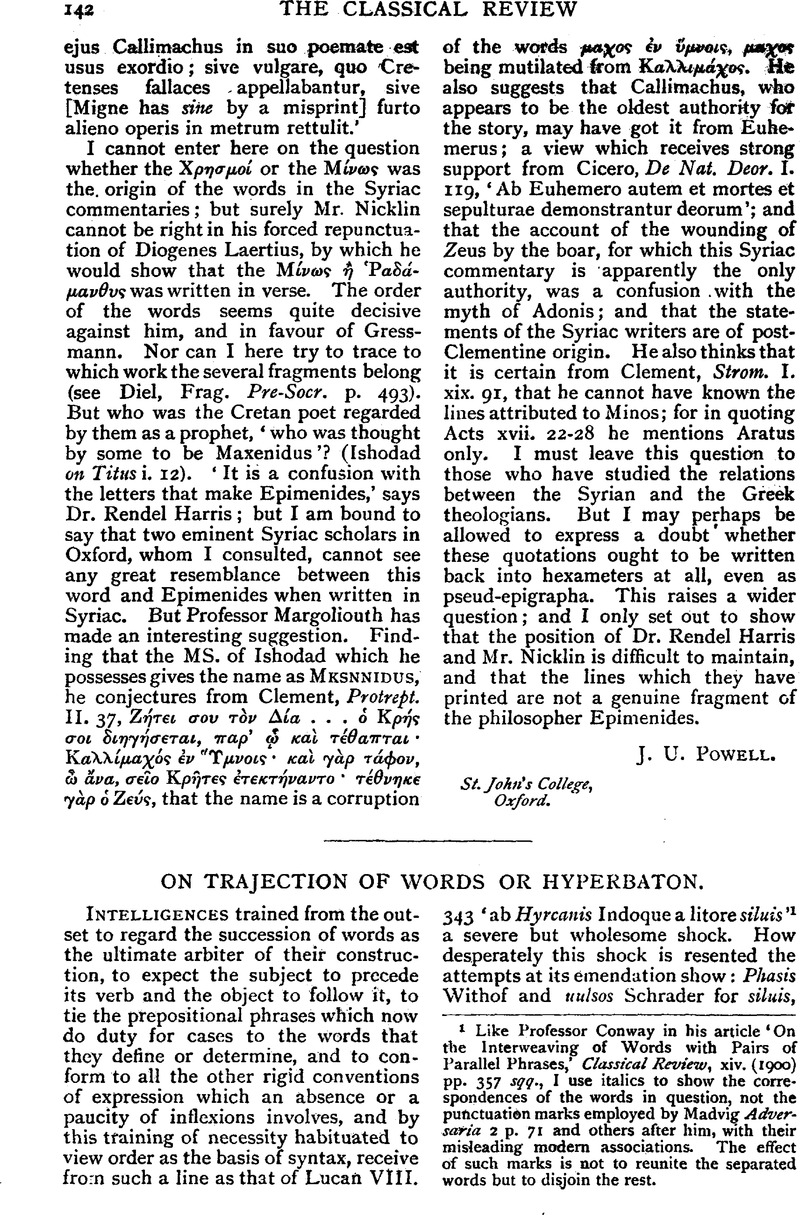No CrossRef data available.
Article contents
On Trajection of Words or Hyperbaton
Published online by Cambridge University Press: 27 October 2009
Abstract

- Type
- Original Contributions
- Information
- Copyright
- Copyright © The Classical Association 1916
References
page 142 note 1 Like Professor Conway, in his article ‘On the Interweaving of Words with Pairs of Parallel Phrases,’ The Classical Review, xiv. (1900) pp. 357CrossRefGoogle Scholarsqq., I use italics to show the correspondences of the words in question, not the punctuation marks employed by Madvig Adversaria 2 p. 71 and others after him, with their misleading modern associations. The effect of such marks is not to reunite the separated words but to disjoin the rest.
page 143 note 1 E.g. Professor Housman has several copious ones in his notes on Manilius and elsewhere.
page 143 note 2 E.g. in Kiihncr's, Lateinische Grammatik, ed. Stegmann, , vol. ii., pt. 2, pp. 618sqqGoogle Scholar.
page 143 note 3 Their immediate postposition as in Lucr. 1. 841 ‘ignibus ex’ is a different matter and •does not concern us here.
page 145 note 1 ‘Man darf auch eins nicht vergessen: der römische Dichter konnte auf ein Publikum von Hörern rechnen und ein sinngemässer Vortrag ist oft der beste Kommentar,’ Hildebrandt, R., Beiträge zur Erklärung des Gedichtes Aetna, p. 28.Google Scholar


